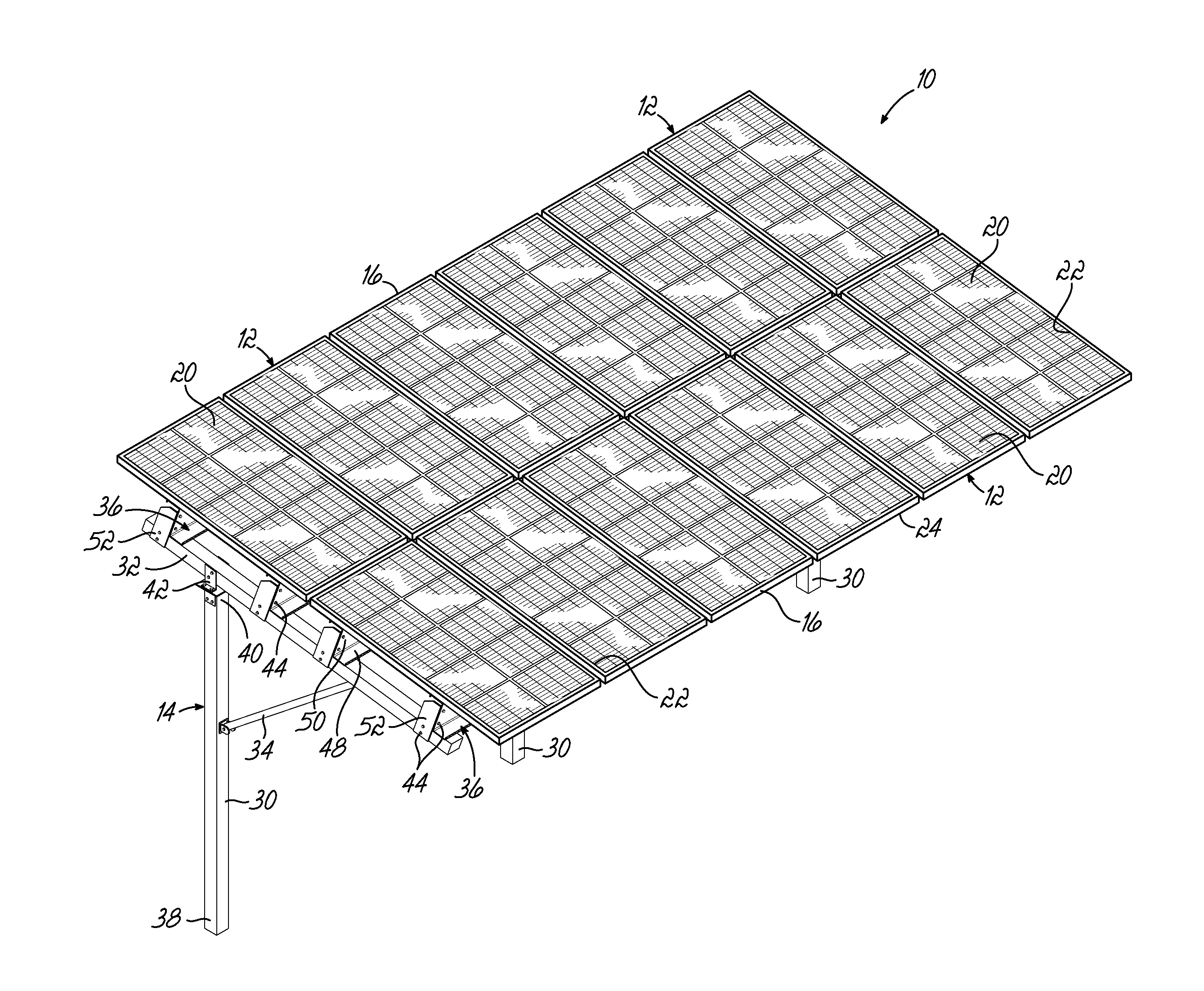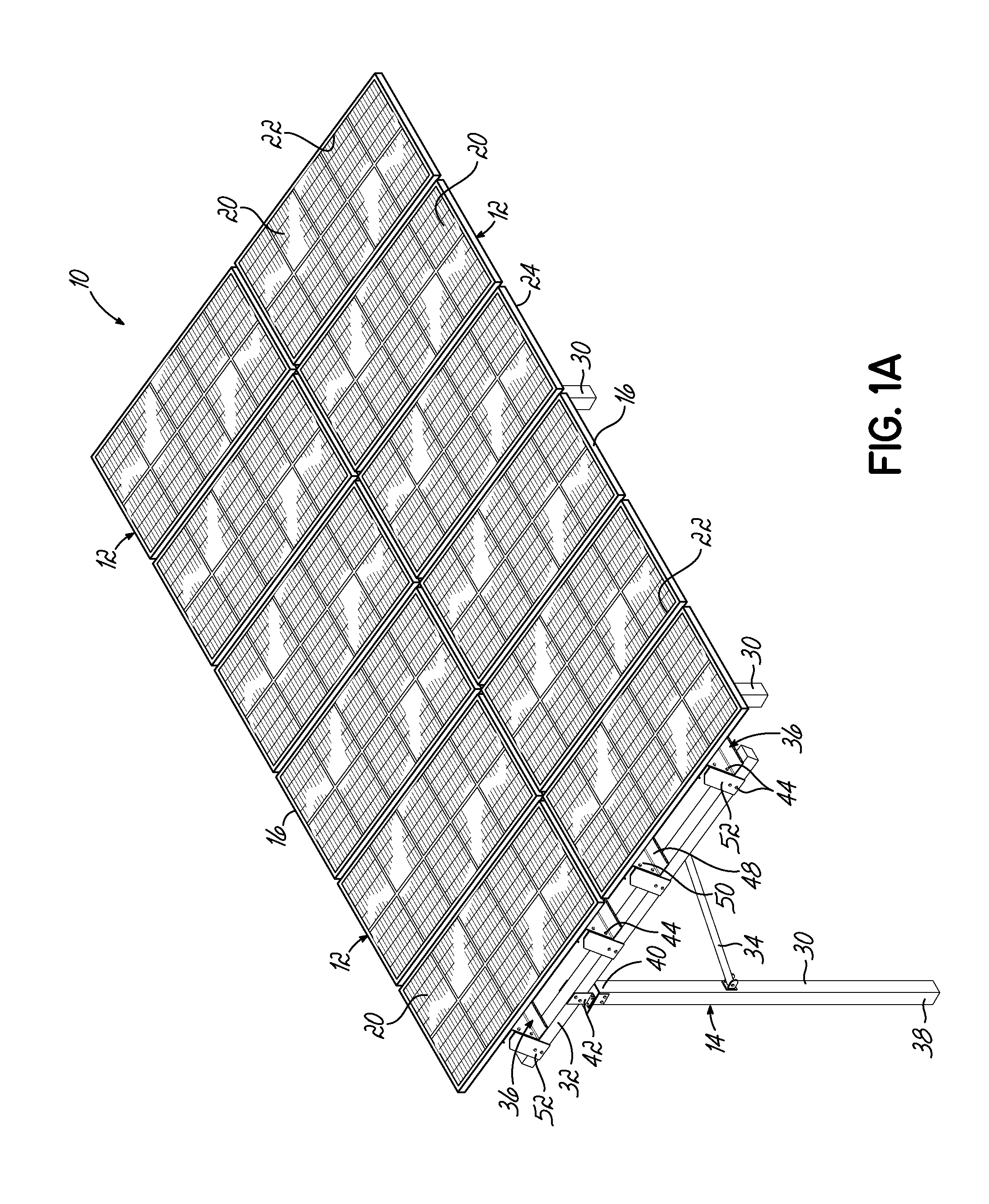Solar mounting system having automatic grounding and associated methods
a solar panel and automatic grounding technology, applied in the direction of heat collector mounting/support, curtain suspension devices, lighting and heating apparatus, etc., can solve the problems of difficult electrical bonding and/or grounding of panel frames in solar mounting systems, significant additional hours of labor needed during installation for any additional steps, and achieve the effect of reducing the time to production
- Summary
- Abstract
- Description
- Claims
- Application Information
AI Technical Summary
Benefits of technology
Problems solved by technology
Method used
Image
Examples
Embodiment Construction
[0037]With reference to FIGS. 1A through 5, an exemplary embodiment of a solar mounting system 10 that enables mounting and automatic grounding of a plurality of solar panels 12 is shown. The solar mounting system 10 shown in FIG. 1A includes twelve solar panels 12 arranged in a 6-by-2 grid (e.g., in a portrait orientation) on top of a support structure 14 that is tailored in size to the number of solar panels 12 to be supported. It will be understood that the particular number and arrangement of the solar panels 12 can be modified in other embodiments, such as in larger assemblies (e.g., up to hundreds or thousands of solar panels 12) used for commercial or utility power generation, without departing from the scope of the invention. For example, FIG. 1C described in further detail below illustrates an alternative embodiment of the solar mounting system 10 in which the solar panels 12 are supported in a landscape orientation. The support structure 14 of the solar mounting system 10 ...
PUM
| Property | Measurement | Unit |
|---|---|---|
| thickness TP | aaaaa | aaaaa |
| thickness TP | aaaaa | aaaaa |
| size | aaaaa | aaaaa |
Abstract
Description
Claims
Application Information
 Login to View More
Login to View More - R&D
- Intellectual Property
- Life Sciences
- Materials
- Tech Scout
- Unparalleled Data Quality
- Higher Quality Content
- 60% Fewer Hallucinations
Browse by: Latest US Patents, China's latest patents, Technical Efficacy Thesaurus, Application Domain, Technology Topic, Popular Technical Reports.
© 2025 PatSnap. All rights reserved.Legal|Privacy policy|Modern Slavery Act Transparency Statement|Sitemap|About US| Contact US: help@patsnap.com



